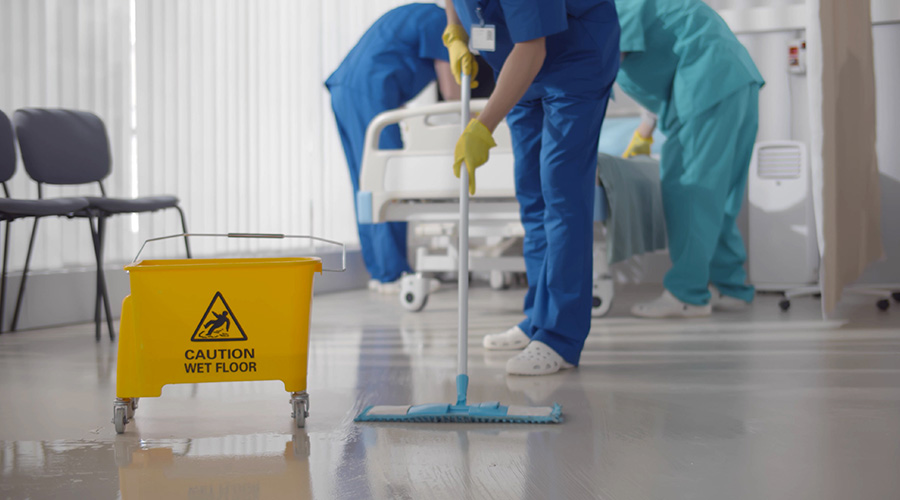Molds spread and reproduce by making spores that can survive the dry conditions found in institutional buildings. Effects of mold exposure range from nasal stuffiness, eye irritation and wheezing to fever, shortness of breath and lung infections. For the unhealthy patients of healthcare facilities, mold growth can prove devastating, according to a blog on the FacilityCare website.
It is impossible to eliminate all mold and mold spores in the indoor environment. However, it may be possible to trap and eliminate airborne mold spores via the proper HVAC air filtration strategy, according to Tony Fedel, associate marketing director of Kimberly-Clark Professional Filtration.
"Part of the job of a building’s HVAC system is to eliminate or significantly reduce respiratory illness triggers— including microorganisms— that occur within a building. The key HVAC system component to reducing these triggers is effective air filtration, which provides a primary defense for building occupants against indoor air pollutants, " Fedel wrote.
To select the right air filter to remove mold spores from the breathing air, match the filter’s particle capture efficiencies to the size of mold spores, the blog said. The ASHRAE 52.2 Test Standard measures the efficiency of the filter over three particle size ranges: E1 (very fine particles in the 0.3 to 1.0 micrometer range), E2 (fine particles— including smaller mold spores— in the 1.0 to 3.0 micrometer range) and E3 (coarse particles— including larger mold spores— in the 3.0 to 10.0 micrometer range).
When evaluating results of the ASHRAE 52.2 test, review the Fractional Particle Size versus Particle Diameter Curve included with the test report, according to the blog. The curve will provide the efficiency of the filter for the specific particle size of interest (E1, E2 and E3).
When selecting filters, consider those with a good balance of mechanical efficiency and electret efficiency; these filters will almost always outperform a filter that relies solely on mechanical efficiency.
Read the blog.

 Building Sustainable Healthcare for an Aging Population
Building Sustainable Healthcare for an Aging Population Froedtert ThedaCare Announces Opening of ThedaCare Medical Center-Oshkosh
Froedtert ThedaCare Announces Opening of ThedaCare Medical Center-Oshkosh Touchmark Acquires The Hacienda at Georgetown Senior Living Facility
Touchmark Acquires The Hacienda at Georgetown Senior Living Facility Contaminants Under Foot: A Closer Look at Patient Room Floors
Contaminants Under Foot: A Closer Look at Patient Room Floors Power Outages Largely Driven by Extreme Weather Events
Power Outages Largely Driven by Extreme Weather Events